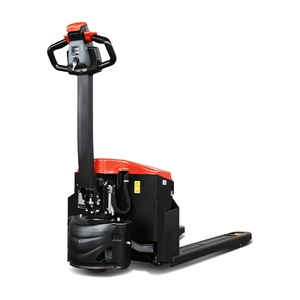In today’s fast-paced and bustling work environments, safety is paramount. This is especially true when it comes to operating heavy machinery like forklifts. One way to enhance workplace safety is by utilizing electric forklifts. These machines offer many advantages over traditional gas-powered forklifts, including lower emissions, quieter operation, and decreased maintenance costs. However, in order to truly maximize the safety benefits of electric forklifts, proper training and adherence to regulations are crucial.
Training for Safe Operation
Training is key when it comes to operating electric forklifts safely. Operators must be properly trained on how to safely operate the equipment, as well as how to identify and address potential hazards. This training typically includes both classroom instruction and hands-on experience, allowing operators to become familiar with the ins and outs of electric forklift operation. By ensuring that operators have the proper training, employers can feel confident that their employees are equipped to handle the challenges that come with operating heavy machinery in a fast-paced work environment.
Importance of Regulations
In addition to training, regulations play a vital role in enhancing workplace safety with electric forklifts. OSHA (Occupational Safety and Health Administration) regulations dictate specific guidelines that must be followed when operating forklifts, including electric models. These regulations cover everything from proper maintenance of the equipment to safe operating procedures. By following these regulations, employers can ensure that their workplace is in compliance with the law and that their employees are operating equipment safely.
Maintenance and Safe Operating Procedures
One important aspect of regulations when it comes to electric forklift is ensuring that the equipment is properly maintained. Regular maintenance is essential for the safe operation of forklifts, as issues with the equipment can lead to accidents and injuries. Employers should establish a maintenance schedule for their electric forklifts and ensure that all necessary repairs are promptly addressed. By keeping their equipment in top condition, employers can reduce the risk of accidents and create a safer work environment for their employees.
Another crucial aspect of regulations when it comes to electric forklifts is ensuring that operators follow safe operating procedures. This includes wearing appropriate safety gear, following designated pathways in the workplace, and adhering to weight limits when loading and unloading materials. By following these procedures, operators can minimize the risk of accidents and injuries while operating electric forklifts.
Conclusion
In conclusion, enhancing workplace safety with electric forklifts requires a combination of proper training and adherence to regulations. By ensuring that operators are well-trained and familiar with the equipment, employers can create a safer work environment for their employees. In addition, by following OSHA regulations and maintaining their equipment properly, employers can reduce the risk of accidents and injuries in the workplace. Ultimately, by prioritizing safety when it comes to electric forklift operation, employers can protect their workers and promote a culture of safety in their workplace.
